The Space Needle in Seattle, Washington, is an iconic observation tower and an example of 20th-century futurist architecture. John Graham Jr. designed it for the 1962 Seattle World’s Fair. It is 603 feet (184 meters) and has a flying saucer-shaped top. The structure embodies Space Age aspirations, with an observation deck and a rotating restaurant offering panoramic views. The Space Needle is characterized by its futuristic Space Age style. The tower’s sleek, retro-futuristic form and minimal ornamentation convey a vision of the future, influenced by the space race and technological innovation. The Space Needle’s construction employed advanced engineering principles to ensure safety and longevity. It is designed to withstand high winds and earthquakes and features a tripod design with steel beams and a heavy concrete foundation. John Graham Jr. led the design team, with significant contributions from architects John Ridley, Arthur Edwards, and Victor Steinbrueck. Steinbrueck’s idea for inclined legs supporting the saucer-shaped top was instrumental in finalizing the design. The Space Needle reflects various historical influences, including UFO imagery and Googie architecture. As an architectural trend, the Space Needle embodies the futuristic and Space Age movements of the late 1950s and 1960s. Its design follows Googie architecture principles, with energetic shapes and modern materials showcasing optimism and progress. The recent $100 million (€92 million, £78 million) renovation posed challenges like maintaining operations during construction and preserving the historic exterior. The Space Needle complies with contemporary safety and accessibility standards, with ongoing upgrades to its infrastructure, elevators, and safety systems. Renovations have improved seismic resilience, accessibility, and overall visitor experience, ensuring the structure’s longevity and continued iconic status. Specialized architecture tours offer insights into the Space Needle’s design and construction. Organizations like AIA Seattle and the Seattle Architecture Foundation conduct tours focusing on the landmark’s architectural significance. Architects can learn from the Space Needle’s bold geometric design, its role as a civic emblem, and the balance between preservation and modernization. In addition to the Space Needle, Seattle boasts other architectural landmarks like the Central Library, Museum of Pop Culture, and Chihuly Garden and Glass. These structures showcase innovative design approaches, from deconstructivist to sculptural styles, offering architects diverse examples of form-making and integrating art and architecture.
What is a Space Needle?
The Space Needle is an iconic observation tower located in Seattle, Washington. It was built in 1962 for the Seattle World’s Fair and stands 604 feet (184 meters) tall and 138 feet (42 meters) wide. The Space Needle features an observation deck at 520 feet (158 meters) and a rotating restaurant at 500 feet (152 meters) that provides 360-degree views of Seattle and the surrounding region, including the Olympic and Cascade mountain ranges, and Mount Rainier, Puget Sound, and Elliott Bay. The Stuttgart TV tower inspired the design of the Space Needle in Germany and features a flying saucer-shaped top housing the observation deck and restaurant that sits atop three extended legs arising from a broader base. The architecture was intended to embody Space Age aspirations and Seattle’s vision of the future. The Space Needle was built in just 400 days for $4.5 million (€4.2 million, £3.5 million) and was created to be a landmark and financially self-sustaining with its restaurant and observation ticket sales.
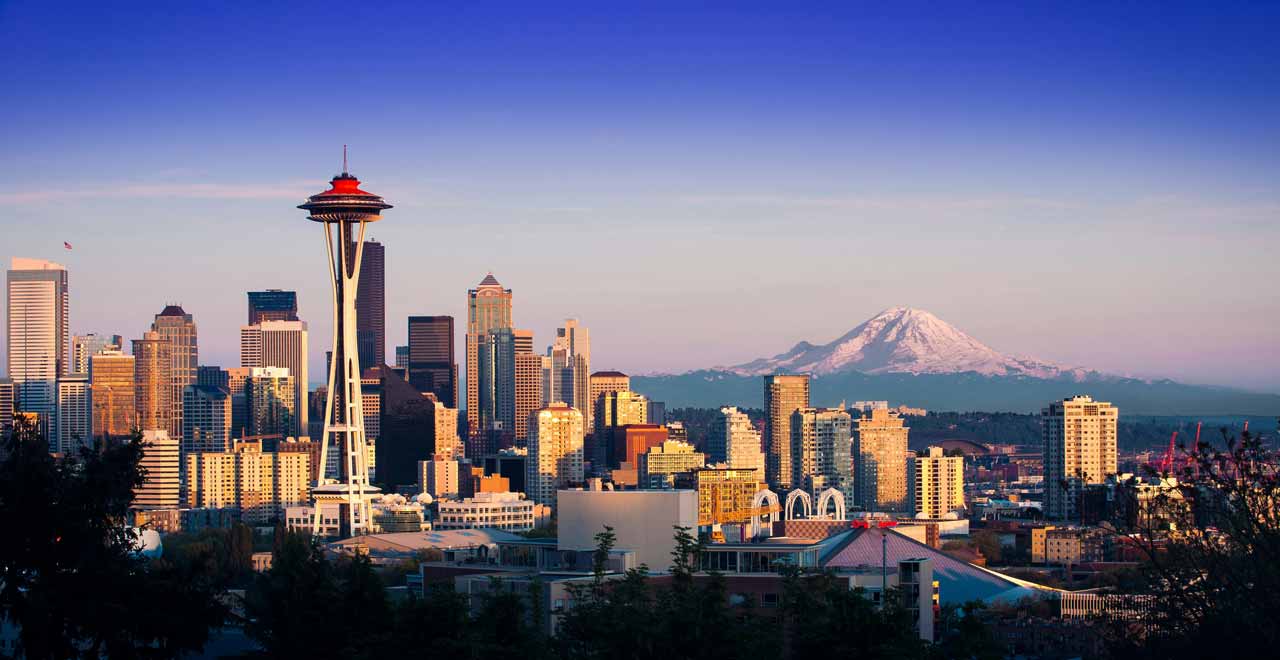
The Space Needle has become an internationally recognized symbol of Seattle and an iconic example of 20th-century futurist architecture. It remains Seattle’s most popular tourist attraction, drawing over 1 million annual visitors. In 2018, the Space Needle completed an extensive renovation that updated infrastructure and added new features like an all-glass observation deck and rotating glass floor to enhance the visitor experience while preserving the tower’s historic exterior design. The Space Needle remains privately owned by the descendants of the original investors who built it. Through technology, architecture, and design, it celebrates innovation and the 21st-century aspirations envisioned by its creators.
What architectural style is most prominent in the Space Needle?
The Space Needle is most prominently characterized by its futuristic and Space Age architectural style. It was designed by architect John Graham Jr. and built for the 1962 Seattle World’s Fair. The 605-foot tall tower was intended to symbolize forward-thinking aspirations about technological innovation and space exploration.
The Space Needle’s flying saucer-shaped observation deck and crown, perched atop three extended legs from a broader base, creates a sleek, retro-futuristic form to evoke imagery of visiting spacecraft. This mid-century modern design combines simple geometric shapes, extensive use of glass, minimal ornamentation, and exposed structural steel elements to achieve a streamlined, machine-like aesthetic conveying a vision of the future. In its choice of materials, unique structure, and embodiment of Space Age themes, the architecture of the Space Needle rejected previous styles in favor of an imaginative, futuristic concept meant to represent Seattle as an ambitious, tech-focused city on the cutting edge. Its prominent place on the skyline continues to make it an iconic example of 20th-century modern architecture inspired by dreams of space travel and faith in technological progress to uplift human achievement.
What structural engineering principles are employed in the construction of the Space Needle?
The Space Needle was designed to be a structure that could safely withstand the elements, earthquakes, and heavy visitor loads year after year. Firstly, the architects and structural engineers utilized principles of wind load analysis, seismic design, foundation engineering, lightweight steel construction, and vertical transportation.
Secondly, the tower was designed to withstand winds up to 200 miles (320 km) per hour and earthquakes of up to 9.1 magnitude. The foundation consists of a 30-foot (9-meter) deep and 120-foot (37-meter) wide concrete pad weighing nearly as much as the steel superstructure to provide stability against lateral forces. The tower shaft uses a tripod design of inclined legs made from steel beams and tubes that flare outward to support the flying saucer-shaped observation deck housing. This steel skeleton structure means the overall weight is lessened to reduce forces during seismic activity. Three exterior glass elevators whisk visitors 520 feet (158 meters) to the observation level in 41. Lastly, it is enabled by structural systems supporting the vertical tracks and machinery to lift heavy loads. The rotating restaurant uses a turntable bearing system, allowing smooth, powered rotation once per hour to showcase the panoramic views. Advanced computer modeling simulated the structure under extreme conditions to prove performance before construction. The Space Needle’s distinct architecture was made possible by the creative application of wind load mitigation strategies, earthquake-resistant design fundamentals, lightweight building materials, gravity-defying cantilevered structures, and vertical transportation technologies.
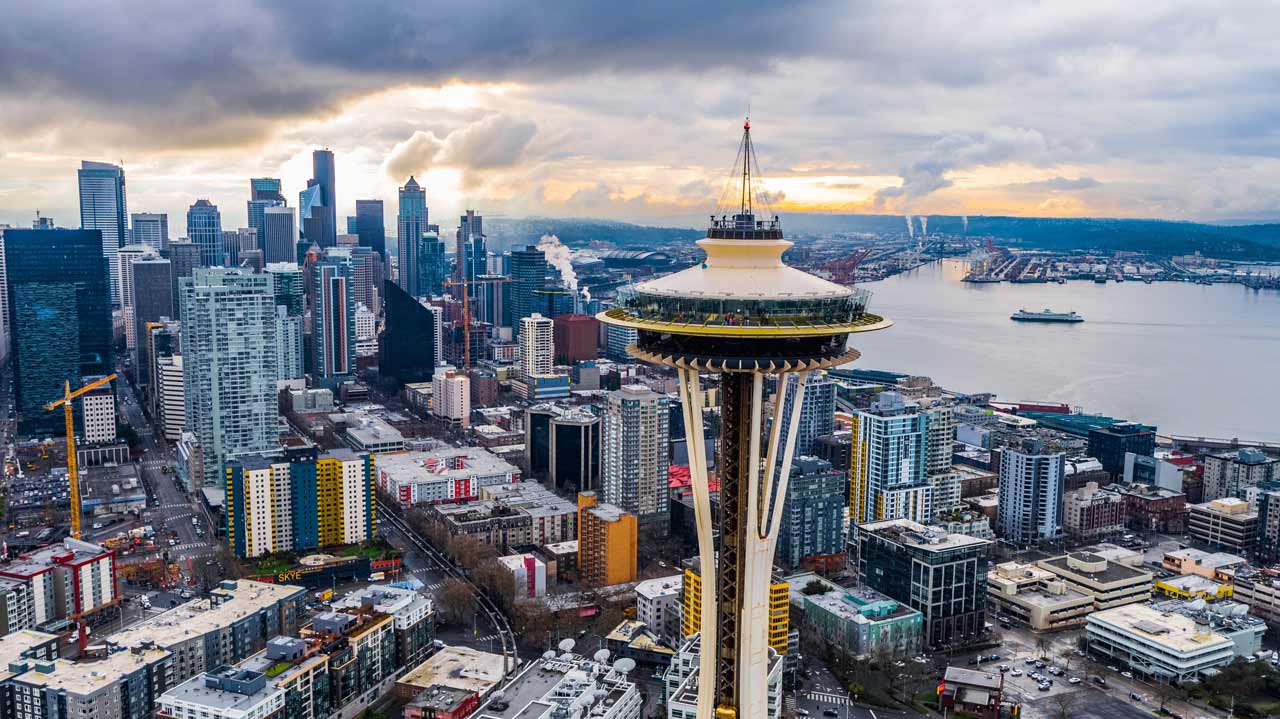
Who designed the Space Needle?
The Space Needle was designed by a collaborative team led by architect John Graham Jr. In developing the conceptual design, hotelier Edward Carlson sketched the original vision of a flying saucer-shaped tower, which Graham and his architecture firm then refined. The Needle’s unique tripod tower design emerged through models created by Graham’s team, including architects John Ridley and Arthur Edwards, with critical input from renowned Northwest architect Victor Steinbrueck.
Steinbrueck proposed the key idea for the tower’s inclined legs by taking inspiration from a wooden sculpture called “The Feminine One.” This allowed Graham’s firm to finalize the narrow-waisted tripod design that flares outward to support the disc-shaped “top house.” Graham provided overall leadership and decision-making, securing the design contract, determining the flying saucer form, and obtaining a patent for the rotating restaurant technology. The Graham architectural team collaborated with structural engineer John Minasian and contractor Howard S. Wright to work out technical considerations related to the foundation, wind loads, materials, rotations system, and more to transform conceptual visions into engineered reality. The Needle’s construction was completed in over 400 days under Wright’s leadership.
What are the historical design influences visible in the Space Needle?
The Space Needle’s distinct design reflects several key historical influences that embody the structure’s forward-looking purpose. Most prominently, the flying saucer shape was directly inspired by imagery of UFO sightings, capturing a futuristic vision. The tripod tower configuration emerged from architect Victor Steinbrueck’s idea to use an abstract sculpture called “The Feminine One” as inspiration for the Needle’s inclined legs flaring out to support the disc-shaped top. This design approach echoed the tower concepts of visionary architect Buckminster Fuller. In its sleek form and extensive use of glass, the Space Age style parallels mid-century Googie architecture, which used space-age themes. The Needle’s revolving restaurant technology had roots in early shopping mall projects architect John Graham worked on. Architecturally, the Space Needle was conceived as a West Coast counterpart to the Eiffel Tower – a civic landmark meant to symbolize a city’s bold aspirations. The Space Needle combined these avant-garde influences with local inspiration from the surrounding Pacific Northwest landscape. Its tripod base and flying saucer crown create an organic shape, evoking the towering evergreens and snow-capped mountains visible from its top.
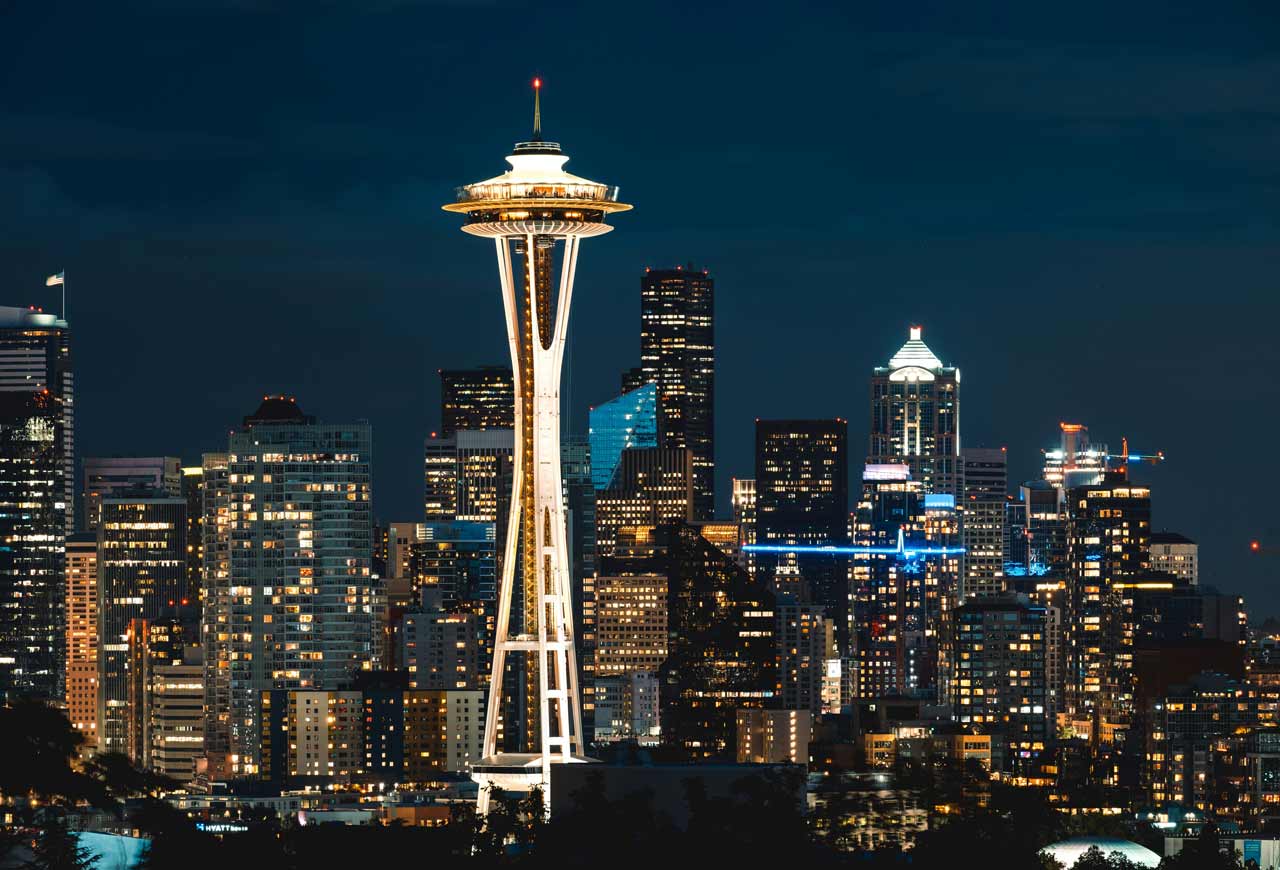
How has the Space Needle influenced the design of other buildings in Seattle, Washington?
The Space Needle has stood as an iconic landmark in the Seattle skyline. This has inspired several subsequent skyscrapers in downtown Seattle to incorporate enhanced viewing decks, restaurants, and open-air spaces at the top. The Columbia Center – the tallest building in Seattle – added a public observation deck on the 73rd floor during renovations, providing a 360-degree enclosed viewing area and outdoor plaza. The Space Needle has also popularized the concept of rotating restaurants that circle as diners take in panoramic vistas. Following the Needle’s lead, Seattle’s Sky View Observatory features a rotating cocktail lounge on its top floor. Architecturally, newer skyscrapers also echo the Space Needle’s sleek lines and glass-heavy design in towers like the Doppler and Insignia Towers.
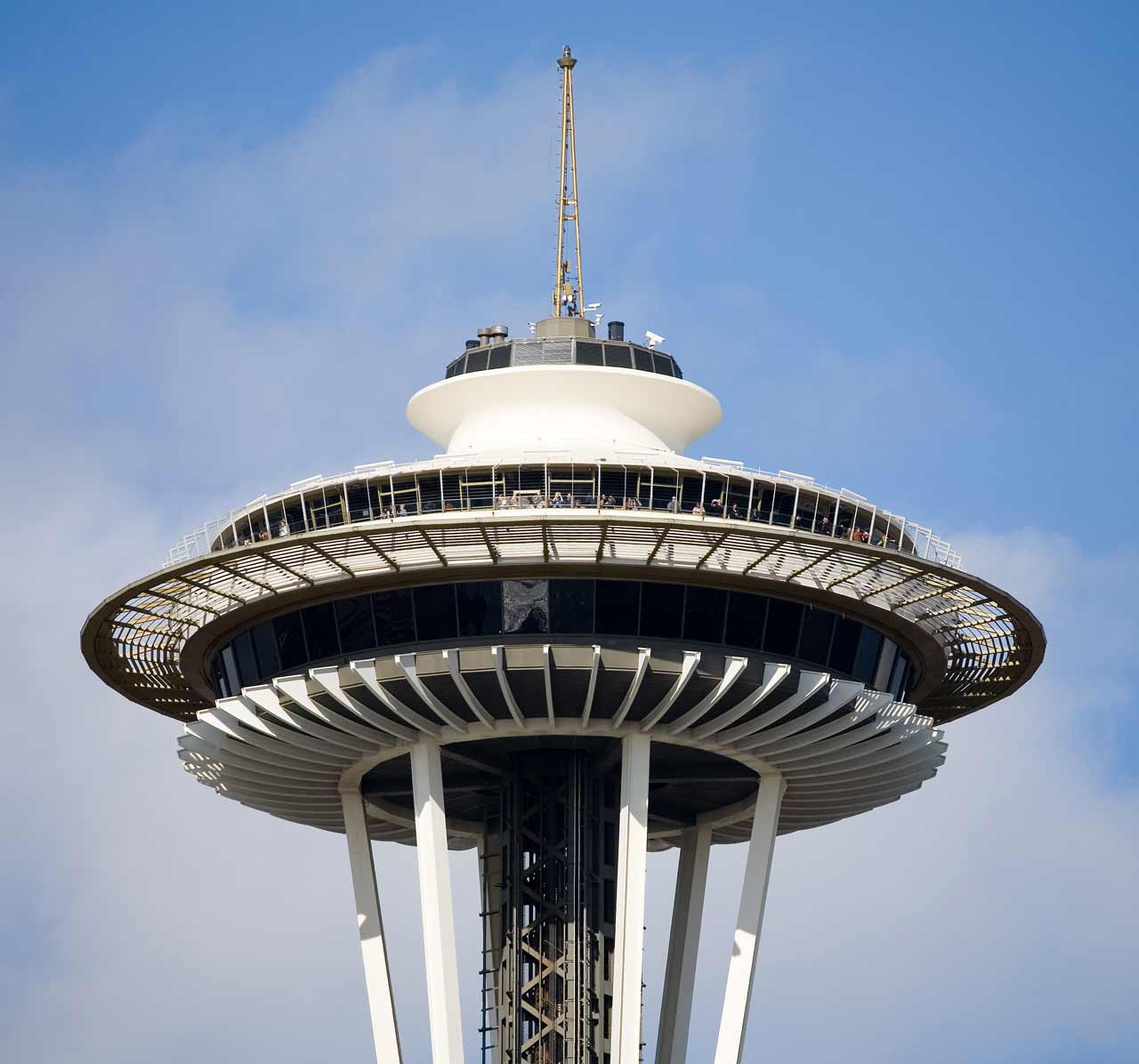
What purpose does Space Needle serve and how does the design help?
The Space Needle was purpose-built to serve as the iconic centerpiece and defining landmark of the 1962 Seattle World’s Fair. The flying-saucer top and tripod tower configuration create a unique, eye-catching profile on the skyline that symbolizes Seattle’s vision of the future. This memorable architecture draws attention and has an enduring promotional value that has made the Space Needle an international icon, promoting Seattle’s image for over 60 years. The Needle’s design facilitates its civic and commercial purposes in several ways. The rotating restaurant’s donut shape enables a circular flow for serving patrons as they take in panoramic vistas. The Needle is built to withstand high winds and earthquakes, with advanced engineering ensuring longevity. The Space Needle’s architecture was designed to showcase innovation from its Space Age theme to its cutting-edge rotating restaurant. The Needle fulfills its purpose as a civic gathering place, an internationally recognizable symbol, and an innovative feat of design and engineering.
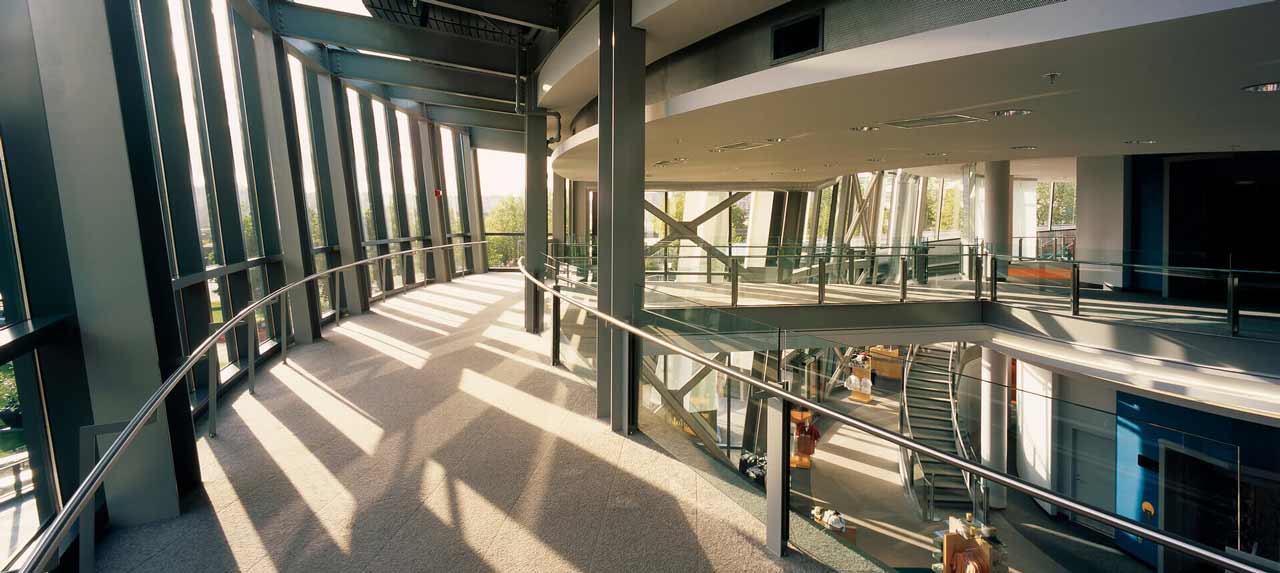
How is the Space Needle maintained?
The Space Needle requires extensive, specialized maintenance to keep it looking pristine and operating safely for over a million annual visitors. A full-time staff oversees daily cleaning and upkeep of the structure. Firstly, window washers rappel down the flying saucer roof and legs multiple times weekly to clean the Space Needle’s over 20,000 square feet of glass. They use pure water-fed poles and squeegees to leave flawless views. The glass was also treated with a water-repellent coating to improve rain runoff. Secondly, the landmark’s critical systems and infrastructure undergo continual inspection and upgrades guided by strict safety protocols. Elevator mechanics service the lifts daily, checking cables, guide rails, doors, and controls. Lastly, the rotating floor turntable and drive mechanism are monitored to ensure smooth, consistent revolutions. Lightning protection, security systems, HVAC, and fire suppression equipment are maintained to the highest standards. In 2018, the Needle completed a $100 million (€92 million, £78 million) renovation focused on preserving the icon while elevating the visitor experience. New glass walls and floors opened up 360-degree views. Infrastructure upgrades improved accessibility, sustainability, and resilience to natural hazards. The Needle has been replacing its exterior elevators for over four years to increase capacity.
How does Space Needle reflect cultural and contextual relevance in its design?
The Space Needle was purpose-built to symbolize Seattle’s aspirations and vision of the future. As such, the landmark tower’s architecture and design embodied the city and region’s cultural context and forward-thinking mindset in the early 1960s.
The Space Age theme of the 1962 World’s Fair for which it was constructed reflected Cold War optimism in technological progress, taking inspiration from the space race. The Needle’s sleek, flying saucer form, height, and innovative rotating restaurant concept were meant to represent this faith in innovation. In materials and methods, the tower demonstrated the capabilities of modern engineering. Its steel frame construction, strong foundation, and resistance to earthquakes and high winds showed the potential of technology to create towering, resilient structures safely.
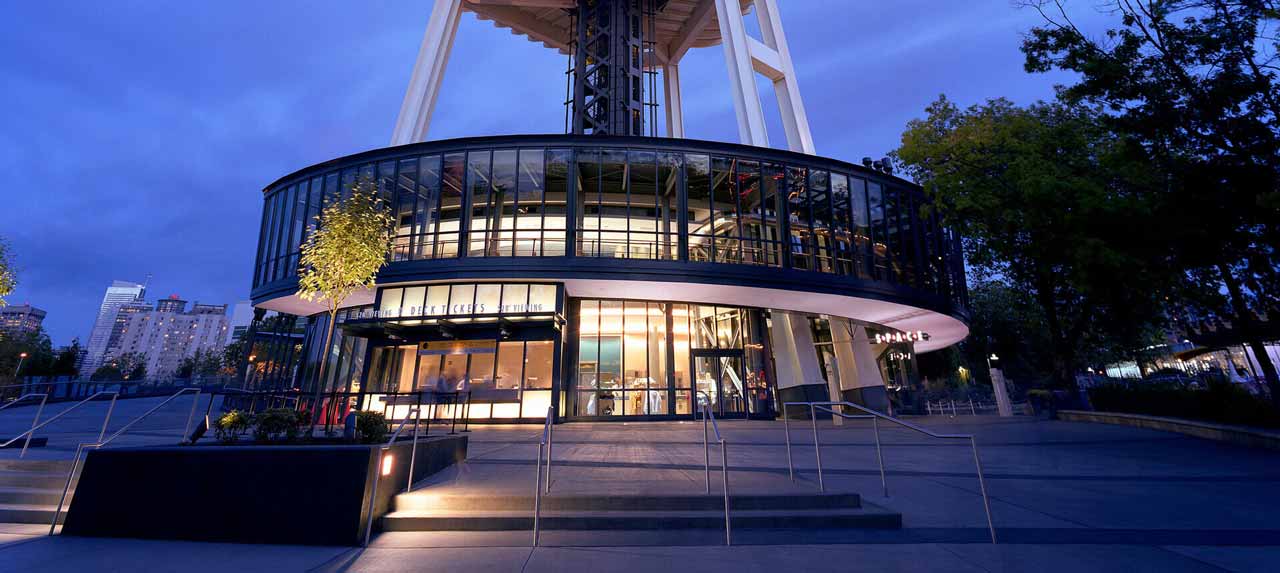
The Needle also took cues from local culture. Its tripod shape, inclined legs, and disc-shaped crown have been compared to the evergreens and mountains of the Pacific Northwest. By using regional materials like Western red cedar paneling, the Space Needle integrated a sense of place. Over time, the Needle has come to embody Seattle’s growth. As the city emerged as a tech hub, the tower represented forward-thinking aspirations. Even as styles changed, the Space Needle’s retro-futuristic aesthetic endured as an icon of the innovation culture. Through its connection to the World’s Fair, significance as a skyline landmark, and reflection of the region’s landscape, the innovative architecture of the Space Needle represents the culture and period that birthed this globally-recognized symbol of Seattle.
What architectural trend or movement does the Space Needle represent?
The Space Needle represents the futuristic and space-age architectural trends that were popular in the late 1950s and early 1960s. The modern design of the Space Needle used simple geometric shapes, minimal ornamentation, and new materials like steel and glass to create a futuristic aesthetic. This followed architectural trends at the time that embraced new technologies and sought to express ideas of progress.
The Space Needle reflects a style known as Googie architecture, which was popular from the late 1940s through the 1960s. Googie architecture used energetic, futuristic shapes like boomerangs, atomic motifs, and exaggerated structural elements to capture the optimism and adventurousness of the Space Age. The Space Needle’s flying saucer top, tall narrow stem, and technology-themed restaurant all demonstrate the defining characteristics of this style.
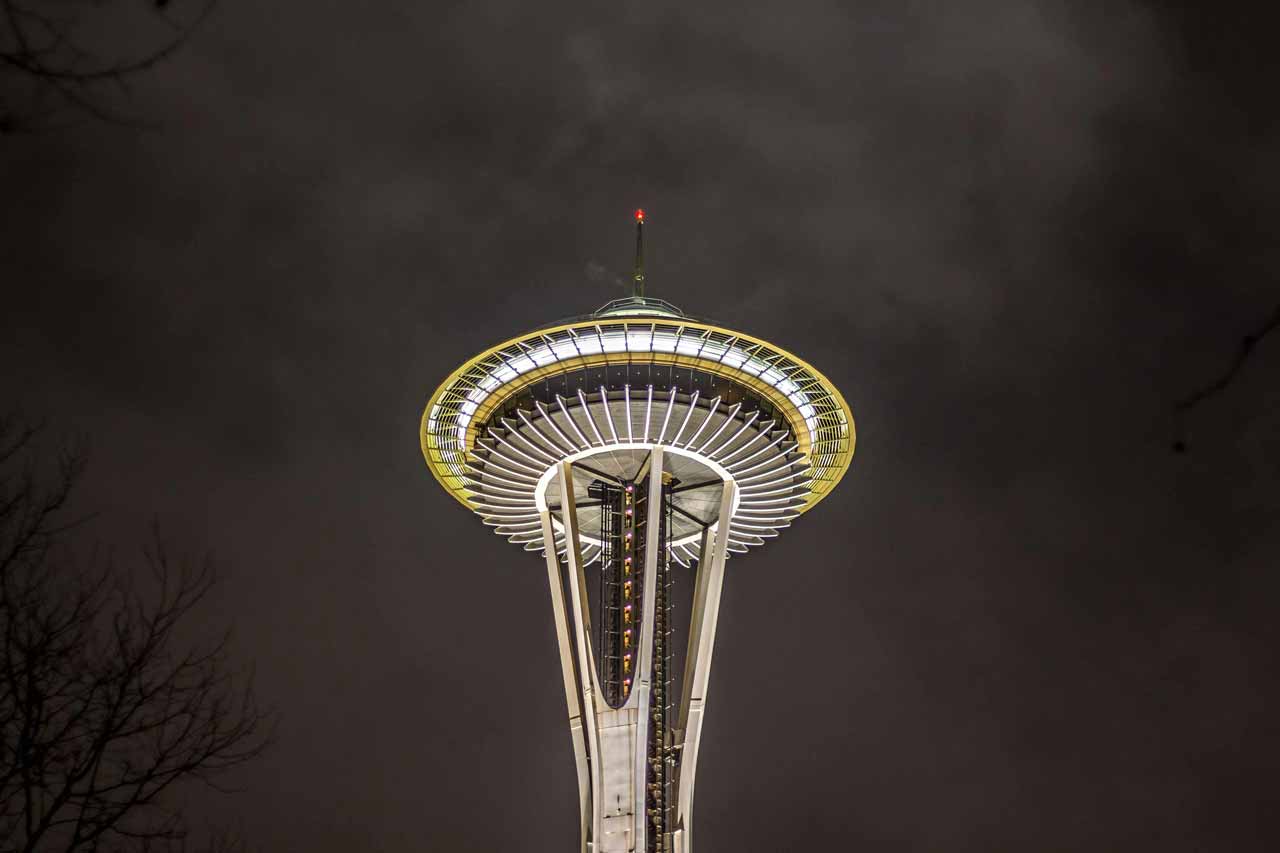
What are the challenges faced during the restoration of the Space Needle?
The recent $100 million (€92 million, £78 million) renovation of the iconic Space Needle involved numerous complex challenges. Firstly, executing major construction work on a landmark tower while keeping it open to over a million annual visitors. The project also aimed to upgrade infrastructure within the strict preservation rules for the historic exterior. Secondly, installing floor-to-ceiling glass walls and a rotating glass floor demanded creative engineering to handle additional weight and meet thermal performance requirements at high altitudes. Lastly, the structure was retrofitted to meet modern seismic standards without altering its original slim profile. Solutions involved innovations like lightweight steel shear walls, heat pumps supplying conditioned air through the ceiling, and reorganizing utilities under the new rotating floor. The risks and restraints of upgrading an icon perched high above Seattle resulted in an enhanced, safer, more energy-efficient Space Needle positioned to inspire visitors for the next 50 years.
How does Space Needle comply with contemporary safety and accessibility standards?
The iconic Space Needle was purpose-built in 1962 but has undergone continual upgrades to meet evolving safety codes and accessibility requirements. Recent major renovations invested over $100 million (€92 million, £78 million) to completely modernize infrastructure while preserving the landmark’s historic exterior. The renovation focused significantly on seismic resilience and wind resistance. The tower was reinforced to withstand up to a 9.1 magnitude earthquake, exceeding current standards. Safety systems, including fire alarms, suppression equipment, and lightning protection, have all been upgraded to current codes. Elevators and the rotating restaurant turntable are rigorously maintained and monitored. Glass walls and floors feature tempered safety glazing, which can withstand impacts. Strict safety rules and protocols guide all operations. For accessibility, the Space Needle has a dedicated wheelchair entrance and elevator system that transports mobility-impaired visitors directly to the observation levels. Viewing areas provide ample room for wheelchairs, and telescopes offer adjustable heights. Ongoing preservation efforts will replace exterior elevators to boost capacity while technology enhancements continue elevating the visitor experience. The Space Needle persists in pioneering access and safety, ensuring its ability to inspire all for the next 60 years.
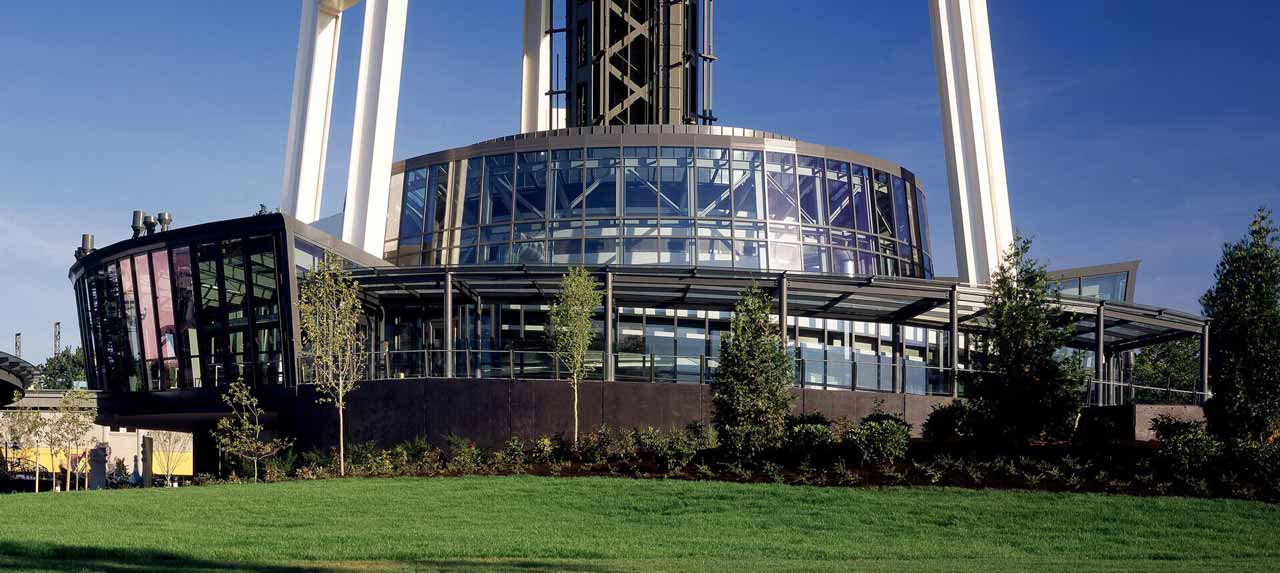
Are there any specific tours for architects or architecture enthusiasts visiting the Space Needle?
Yes, the Space Needle offers excellent tours for architecture enthusiasts to learn about and experience this landmark structure. Several organizations provide specialized architecture tours of the Space Needle. AIA Seattle offers a “Women in Design” tour that goes behind the scenes with the architects and engineers who worked on the renovation. The Seattle Architecture Foundation has volunteer-led walking tours of downtown Seattle that incorporate the Space Needle and other notable buildings. Tickets start at $25 (€23, £20) per person for these 2-hour public tours offered Saturdays April-October. Private 2-hour tours covering the Space Needle and surrounding Seattle Center area with an expert guide are also available from tour companies such as See Sight Tours and Viator, starting around $300 (€279, £250).
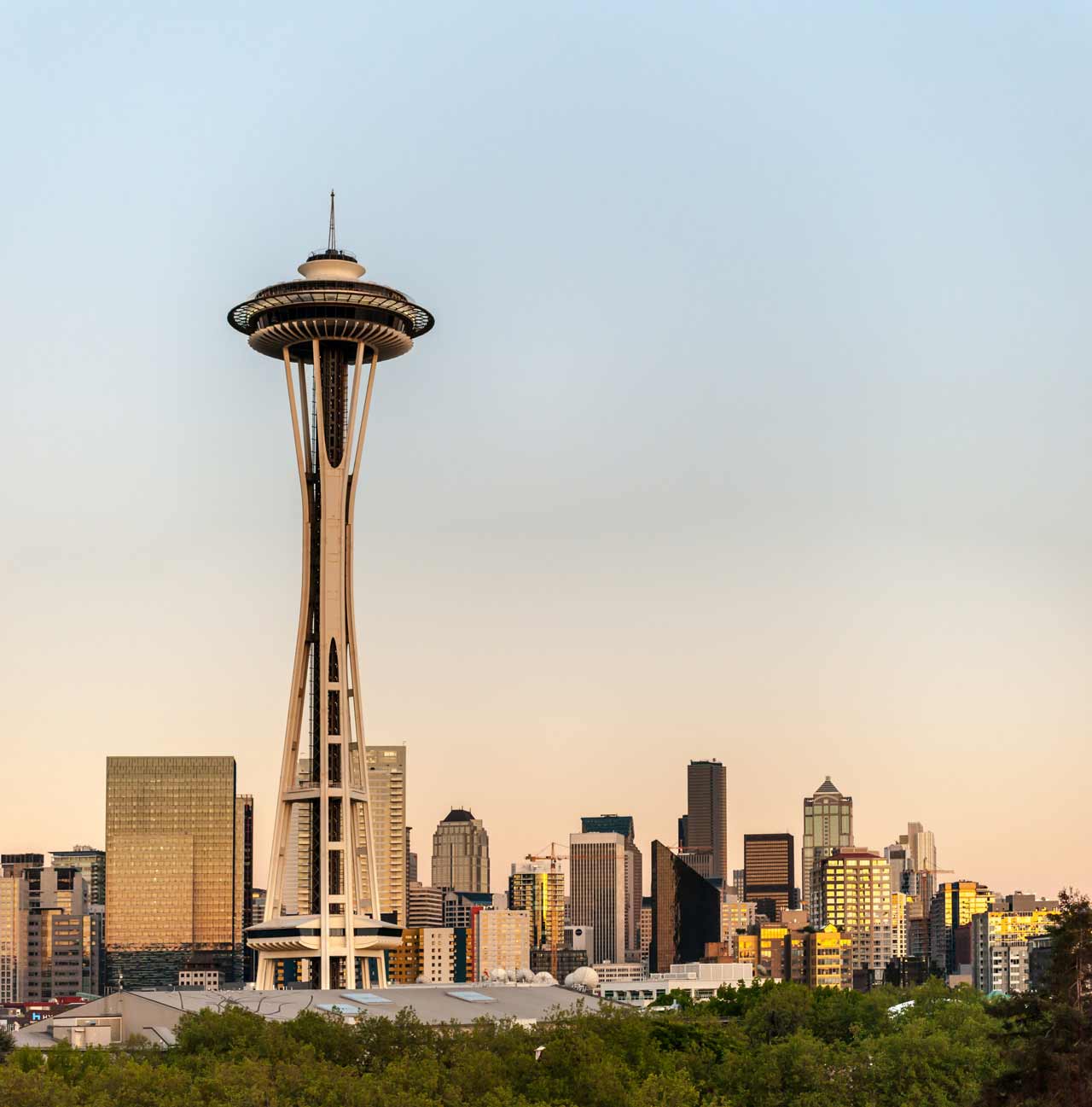
What lessons can architects learn from the design and construction of the Space Needle?
Architects can learn several key lessons from the design and construction of the Space Needle. Firstly, it demonstrates the value of simple yet bold geometric forms in creating iconic architecture. The sleek lines and minimal ornamentation allow it to stand out clearly against the skyline. Architects should note how silhouettes and dynamic shapes that capture the imagination can become symbolic landmarks. This demonstrates how visionary architecture often pushes the boundaries of what is constructively possible. Secondly, the Space Needle’s legacy reveals the potential for World’s Fair and Expo structures to become beloved civic emblems with lasting impacts on a city’s identity and growth. Seattle’s choice to build an observation tower rather than a standard pavilion or arena left a defining mark on the skyline. Thirdly, the recent renovation shows how to thoughtfully update and revitalize a structure without compromising its historic character. Protecting the original exterior profile while modernizing systems and the visitor experience for the 21st century provides a model for balancing preservation with innovation when adapting an architectural icon to meet contemporary demands.
What are the best architectural landmarks in Seattle, Washington to visit as an architect?
Listed below are the best architectural landmarks in Seattle, Washington to visit as an architect.
- Space Needle: The Space Needle is a must-visit for architects interested in the mid-20th-century modernist architecture and the futuristic design of the 1962 World’s Fair. The structure features a distinctive flying saucer-like top designed by Edward E. Carlson and John Graham, Jr.. The observation deck and revolving restaurant offer views of the city, showcasing the integration of innovative engineering and architectural aesthetics in a landmark building.
- Seattle Central Library: The Seattle Central Library, designed by Rem Koolhaas and Joshua Prince-Ramus of OMA in conjunction with LMN Architects, is a key site for architects exploring contemporary library design and the use of space for public interaction. Opened in 2004, the library is notable for its unique geometric form, use of glass and steel, and interior spatial arrangement. The building challenges traditional library designs, promoting transparency, openness, and functional flexibility, making it a modern icon in library architecture.
- EMP Museum (now Museum of Pop Culture or MoPOP): The Museum of Pop Culture designed by Frank O. Gehry and opened in 2000 is for architects interested in deconstructivist architecture and the use of unconventional materials. Gehry’s design features a fusion of textures and colors, using metal and other materials to create an experience that is reflective of the museum’s focus on contemporary pop culture.
- Smith Tower: Smith Tower is a significant visit for architects studying early 20th-century skyscraper design. Completed in 1914, it was the tallest building west of the Mississippi River at the time. The building’s neoclassical architecture, with its terra cotta exterior and elaborate ornamentation, represents its era’s architectural ambitions and contrasts the city’s more modern structures.
- Chapel of St. Ignatius: Designed by famous architect Steven Holl and completed in 1997, the Chapel of St. Ignatius at Seattle University is a key destination for architects exploring contemporary religious architecture. The chapel’s design is focused on capturing and manipulating light to create a series of ‘light volumes,’ providing a spiritual and architectural experience. The use of color and light in this building makes it an exemplary work in the use of architectural elements to evoke emotion and spirituality.


